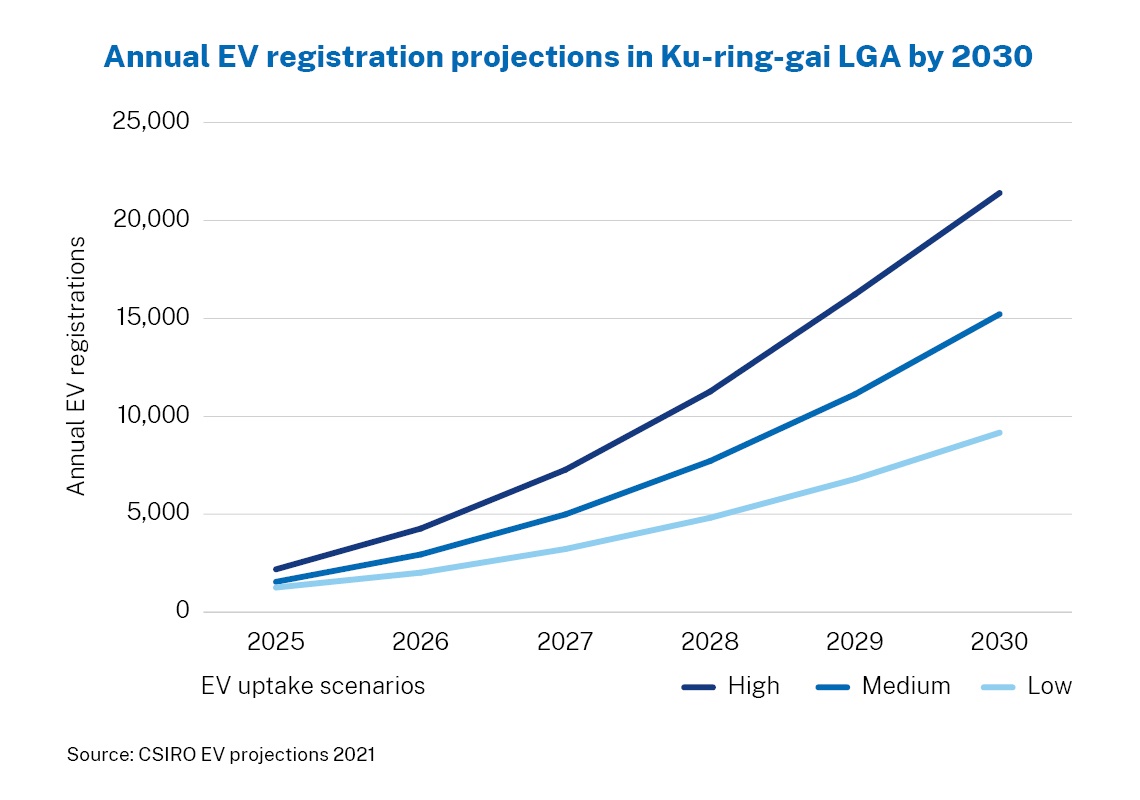Why go electric?
Urgent action is required by all levels of government and our community to face our rapidly changing climate and ensure a healthy future.
Ku-ring-gai emissions snapshot
Currently 28% of Ku-ring-gai's greenhouse gas emissions come from transport. Owning an electric vehicle (EV) directly addresses this and can make a real difference. Read about the actions we're taking to achieve Net Zero emissions..
Ku-ring-gai has one of the highest uptakes of electric vehicles in NSW with almost 5% of passenger vehicle registrations being electric (Battery EV or Plug-in Hybrid EV) (as of Jan 2025). The number of EVs has been steadily increasing and it’s been estimated that there will be between 9,162 – 21,404 EVs registered in Ku-ring-gai by 2030.

Why public chargers?
Most EV owners prefer to charge at home. However, some residents in terraces, apartments and rentals aren’t able to do this. Kerbside charging ports are the most convenient and cost-effective charging option for these residents.
The NSW Government estimates that Ku-ring-gai may need 441 kerbside charge ports by 2030 to meet demand in our community.
Visit our Public Chargers web page where you will find public charging infrastructure details.
How many people are using the chargers?
Between August 2024 and January 2025 our chargers have delivered over 110,000 kWh of energy.
This is equivalent to:
- Removing 85 tonnes of CO2 (carbon dioxide) from vehicle emissions
- Driving around Australia 40 times
- Powering over 5,800 households for a day.
Exploren tells us that 390 drivers completed over 5,700 charge sessions in the first 3 months of operation.
Sustainable transport is one of the best ways for us to reduce our greenhouse gas emissions, with electric vehicles and EV charging being identified as key actions in our Net Zero Communities Strategy.
Council’s fleet transition
We are working towards electrifying our own vehicle fleet. To date, we have over 20 EVs including operational and leaseback vehicles with more on the way. As we transition to an all-electric fleet, it is important to us that the safety, reliability, environmental impacts, and financial feasibility are considered throughout the lifecycle of the vehicle.